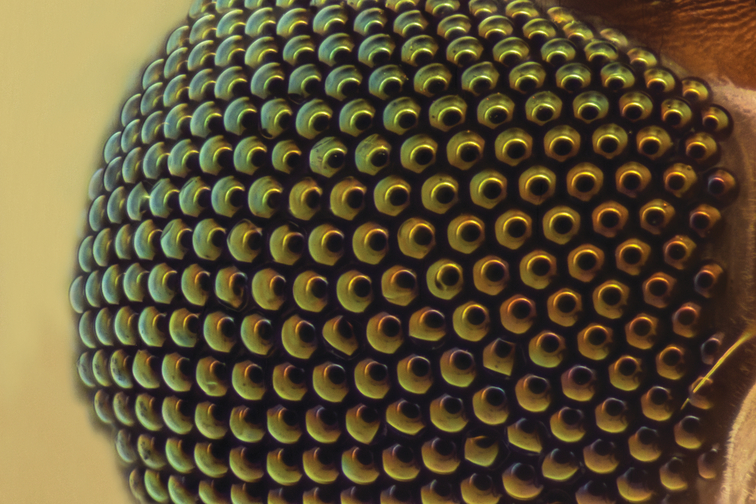
Most people see mosquitoes as a mere nuisance —or worse, a vehicle for disease. But Joelle Frechette, associate professor in the Department of Chemical and Biomolecular Engineering and an affiliate in the Institute for NanoBioTechnology, instead found inspiration in these insects and has devised an elegant strategy for replicating their surprisingly sophisticated visual system.
The mosquito’s compound eye comprises an array of hundreds of individual “microlenses,” which collect a rich visual representation of its surroundings without overloading the mosquito’s simple brain. In contrast, “human eyes get higher-resolution and higher-quality images, but they also need a lot more processing power,” says Frechette. An artificial design that mimics the structure found in mosquitoes could provide robots with an effective and computationally efficient means for seeing the world.
Frechette, along with her former postdoc Donglee Shin and her Johns Hopkins colleague Michael Bevan, professor of chemical and biomolecular engineering, have now developed a system that allows them to manufacture customized compound eyelike assemblies in a stepwise fashion.
“We were trying to find simple building blocks,” explains Frechette. A combination of nanoscale particles and tiny liquid droplets ended up fitting that bill. As a first step, the researchers fabricated a device that churns out nanoparticle-encased oil droplets. These were hardened with ultraviolet light, producing microlens equivalents. These were then deposited onto larger oil droplets, where they self-assembled into dense arrays. With a second blast of ultraviolet illumination, the researchers’ artificial compound lens was complete.
The compound lenses produced clear images, with the same broad peripheral vision achieved by insect eyes. By altering the assembly conditions, Frechette and colleagues produced diverse lens designs. These included compact, lens-like domes, as well as structures that were convex on both sides. “These lenses also magnified the image,” notes Frechette. Their compound lenses also proved resistant to fogging, with water droplets on the surface quickly spreading out so that they no longer distorted the view.
Such synthetic lenses could prove useful for medical devices or robots that need to deliver clear images in rugged conditions, and Frechette is exploring strategies for streamlining production. She also has plans for more ambitious designs.
“We have other biomimetic structures in mind that will have better performance in terms of optics but would be more challenging to produce synthetically,” she says.




